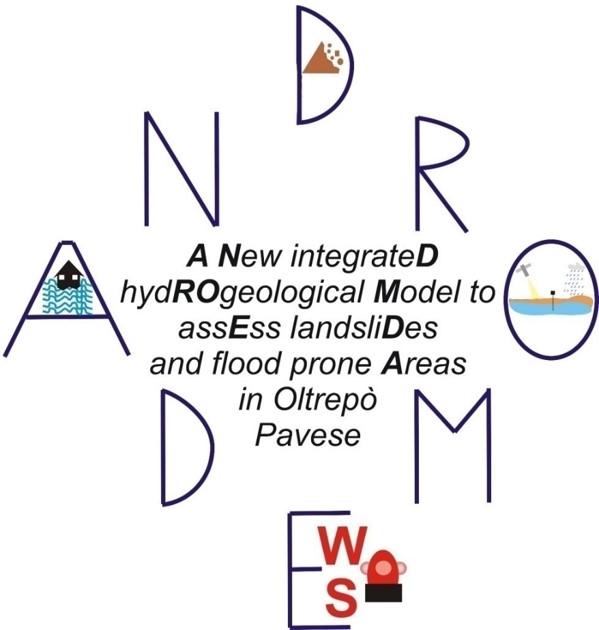Rainfall soil moisture thresholds definition for Early Warning System
Work Package Leader – Dr. Massimiliano Bordoni, Department of Earth and Environmental Sciences, University of Pavia
The final WP will be addressed to the development, the testing and the validation of Early Warning System (EWS) for shallow landslides and floods prediction. This WP will be composed by two subsequent phases.
1) In the first phase, combined soil moisture–rainfall thresholds will be defined for both shallow landslides and floods.
As regards shallow landslides, rainfall and soil moisture conditions corresponding to the events of the landslide inventories defined in previous WPs will be determined and used, subsequently, to define appropriate thresholds, the overcoming of which might result in slope instability. As regards floods, running the overland flow model with past (and synthetic) observations will enable the determination of rainfall and soil moisture conditions producing river flooding or high hazard to the critical points defined in WP1. These conditions will be used for the definition of rainfall and soil moisture thresholds for the hydraulic hazard. Based on the proximity to the soil moisture-rainfall thresholds, or on their overcoming, early warning indicator maps will be finally obtained. The reconstructed combined soil moisture–rainfall thresholds will constitute indicators of the hydrological-hydraulic (shallow landslides and floods) hazards that could occur in the study area, in correspondence of particular events that will approach or pass the defined thresholds.
Hazard scenarios for shallow landslides and floods will be coupled with vulnerability (V) of each identified critical point. The product between hydrological-hydraulic (shallow landslides and floods) hazards and V maps will allow to determine the multi-risk (R) scenario maps.
Multi-risk maps will be available at high spatial and temporal resolution (e.g., 100 m, hourly) and will be integrated using a WEB-GIS platform, in order to build a prototypal near real time EWS and will constitute a valuable tool for Civil Protection for the mitigation of the risk in Oltrepò Pavese area. Finally, semaphoric maps will be delivered identifying the potential flood and landslide hazard/risk in the entire study area.
2) In the second phase of WP4, the prototypal EWS will be tested and validated. For its validation, at least two past events of shallow landslides and floods triggering, identified in the inventories obtained in WP1, will be considered. By the application of the prototypal EWS, hazard and risk maps of the selected validation events will be created. These will be compared with the distribution of the areas affected by real events, in order to verify if the operational EWS would be able to identify the real time and locations of the threatened areas.
During the validation phase, Early Warning System will be also tested with real data of the last 6 months of the period covered by this project. In this way, this tool will be tested also considering real-time situations. True positive and false positives moments could happen. These results will be compared with the early warning messages delivered by Lombardia Region (in the figure of Functional Centre of Early Warning of Natural Risks for Civil Protection Actions – Centro Funzionale Monitoraggio Rischi), in which the forecasts of physical parametres are compared with statistically determined rainfall thresholds.
Both the validation with past events and the test with last 6-months data will allow to verify the efficiency of ANDROMEDA Early Warning System to discriminate different hydrological-hydraulic scenarios during different events.
Deliverables
Shallow landslide soil moisture-rainfall thresholds: Month 22;
Flood soil moisture-rainfall thresholds: Month 22;
Multi-hazard risk maps and semaphoric maps: Month 24;
Validated Early Warning System tool. Month 30.
